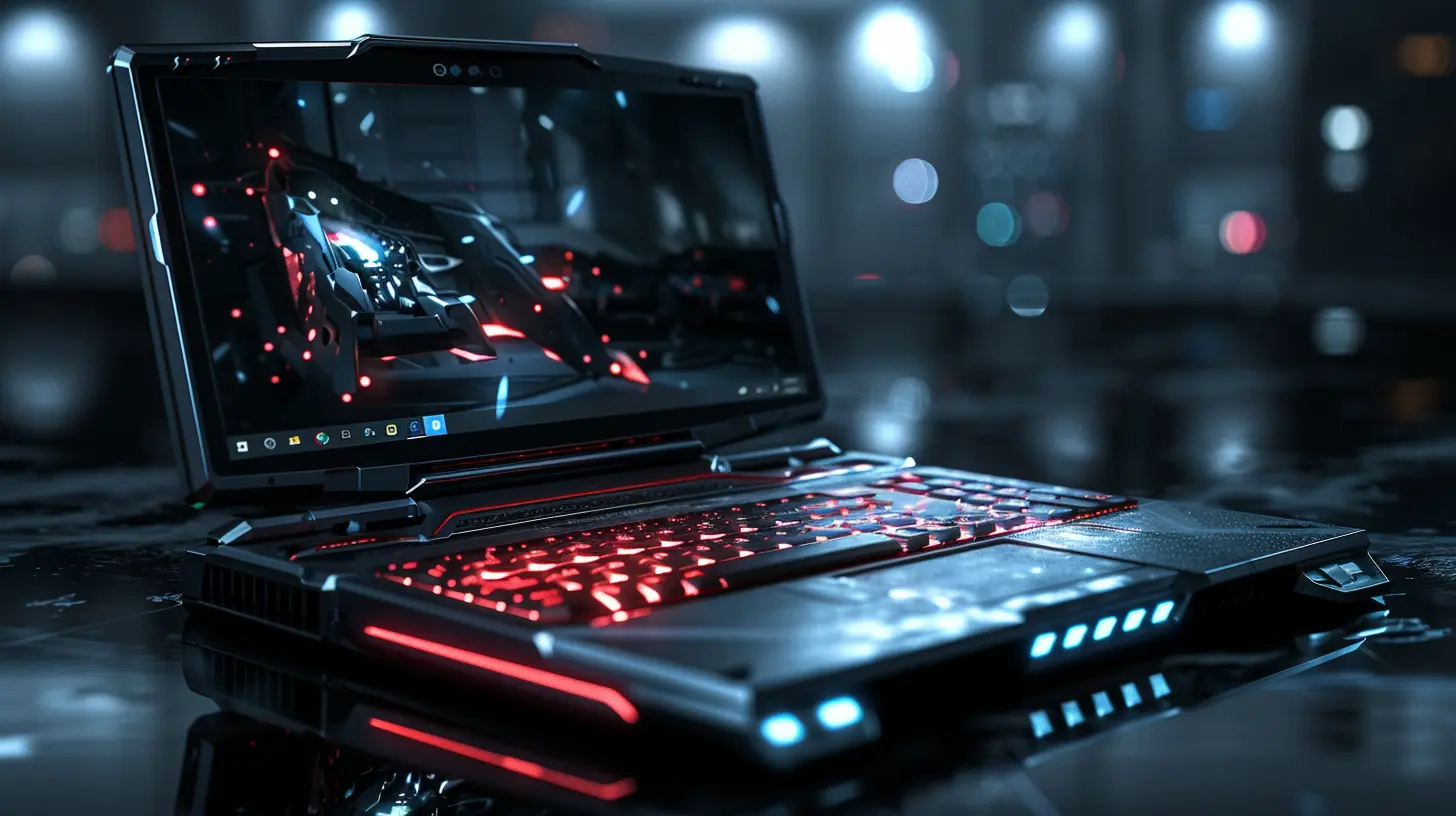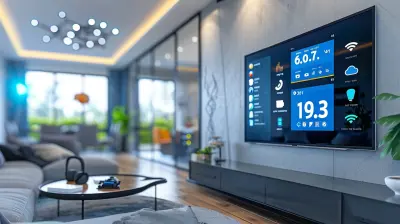Choosing the Right Screen Size for Your Gaming Laptop
20 November 2025
When it comes to gaming laptops, picking the right screen size can feel like choosing between pizza toppings—there are so many options, and you want to get it just right! Whether you’re a casual gamer or someone who lives for those epic late-night gaming marathons, the size of your laptop’s display can make a huge difference in your overall gaming experience.
But here’s the million-dollar question: How do you choose the perfect screen size? Does bigger always mean better? Or is smaller sometimes smarter? Let’s dive deep into this and explore all the factors that should guide your decision.

Why Screen Size Matters in a Gaming Laptop
Before we get into the nitty-gritty of specific sizes, let's take a moment to understand why screen size is such a big deal in the first place.When you’re gaming, the display is your window into the game world. You want it to be immersive, sharp, and, most importantly, comfortable for long hours of play. A screen that's too small can feel cramped, while one that's too large might be cumbersome to carry around.
Screen size impacts a lot more than just how big things look. It affects portability, weight, battery life, and even performance in some cases. So, choosing the right size isn’t just about personal preference—it’s about balancing various factors that will ultimately shape your gaming experience.

Common Screen Sizes for Gaming Laptops
Gaming laptops typically come in three main screen size categories: 13-14 inches, 15-16 inches, and 17-18 inches. Each has its pros and cons, and they cater to different types of gamers and user needs. Let’s break it down:13-14 Inches: Compact and Portable
This category is the “small but mighty” of gaming laptops. These laptops are compact, lightweight, and easy to transport, making them perfect for gamers on the go. But let’s be real—they also come with some compromises.Pros:
- Portability: If you’re someone who likes to game on the move or travels frequently with your laptop, a 13-14 inch model is super easy to carry around. It’ll fit snugly in your backpack, and you won’t feel like you’re lugging around a brick.- Battery Life: Smaller screens tend to require less power, so these laptops often come with longer battery life. That’s a huge plus if you’re gaming away from a power outlet.
- Price: Generally speaking, laptops in this size range are more affordable. So if you’re on a budget but still want a decent gaming experience, this might be the way to go.
Cons:
- Limited Immersion: Let’s be honest: a smaller screen just doesn’t deliver the same immersive experience as a larger one. You might miss out on some of the finer details in your games.- Performance Trade-offs: Due to their compact size, these laptops often pack lower-tier hardware. You may not get the best GPU or even a great cooling system, which could affect gameplay when you’re running more demanding titles.
15-16 Inches: The Goldilocks Zone
This is where most gamers land. A 15-16 inch screen offers a sweet spot between portability and screen real estate. It’s the “just right” option for many people, offering a balanced gaming experience.Pros:
- Versatility: These laptops are big enough to give you a more immersive gaming experience, yet small enough to remain reasonably portable. They’re perfect for people who want a balance between gaming at home and gaming on the go.- Better Performance: More space means more room for better hardware. You’re likely to find more powerful GPUs and CPUs in this size range, which is ideal for gamers who want to run AAA titles or enjoy high-refresh-rate screens.
Cons:
- Weight: While these laptops are still portable, they’re not as lightweight as their smaller counterparts. You’ll feel the difference in your backpack or on your lap during extended gaming sessions.- Battery Life: The larger screen and more powerful components will drain the battery faster. If you’re gaming away from a power source, you might find yourself running for the charger sooner than you’d like.
17-18 Inches: The Big Boys
If you’re the kind of gamer who’s all about that immersive experience and doesn’t mind sacrificing portability, then a 17-18 inch laptop could be your dream machine. These are the beasts of the gaming laptop world.Pros:
- Immersive Experience: Bigger screens mean bigger visuals. If you’re into games with stunning graphics, a large display will make everything look more impressive. You’ll feel like you’re right there in the action.- Performance Powerhouse: With more space comes more room for high-end hardware. These laptops often come with top-tier components, such as powerful GPUs, high-refresh-rate displays, and advanced cooling systems. You’re getting a desktop-level experience in a laptop body.
Cons:
- Portability: Let’s be real—these laptops are heavy. You’re not going to casually toss one of these into your bag and head to a coffee shop. They are more suited to being stationary than portable.- Battery Life: With great power comes great energy consumption. These laptops are power-hungry, and you’ll likely need to keep them plugged in most of the time, especially when gaming.

Factors to Consider When Choosing a Screen Size for Your Gaming Laptop
Now that you know the main screen size categories, how do you actually choose the right one for your needs? Let’s take a look at some key factors you should consider.1. Portability vs. Performance
One of the biggest trade-offs when choosing a screen size is between portability and performance. If you’re someone who travels a lot or moves from place to place frequently, a smaller screen (13-14 inches) is ideal. You’ll have a much easier time carrying it around, and you won’t sacrifice too much in terms of performance if you’re playing less demanding games.On the other hand, if you’re a hardcore gamer who craves the best graphics and wants to play AAA titles with all the settings cranked up, a larger screen (17-18 inches) will serve you better. Just know that the larger the screen, the less portable the laptop becomes.
2. Gaming Style
What kind of games do you play? This is hugely important when choosing a screen size.- First-person shooters (FPS): If you’re into fast-paced shooters like Call of Duty, a larger screen can give you a better field of view, letting you spot enemies more easily.
- Strategy and RPGs: Games like Civilization or The Witcher 3 benefit from a larger screen where you can appreciate all the fine details and immerse yourself in the game world.
- Casual or indie games: If you’re more into casual games or indie titles, a smaller screen might suit you just fine. You don’t need the high-end visuals or expansive screen real estate for these kinds of games.
3. Resolution and Refresh Rate
Screen size isn’t the only thing that matters—resolution and refresh rate are equally important.- Resolution: A 17-18 inch screen with a 1080p resolution might not look as sharp as a 15-16 inch screen with the same resolution because the pixels are more spread out. If you want a larger screen, consider going for a higher resolution like 1440p or 4K for crisper visuals.
- Refresh Rate: For competitive gamers, the refresh rate is critical. A screen with a 144Hz or higher refresh rate is ideal for fast-paced games, regardless of the screen size.
4. Budget
Let’s not forget about the budget. Larger laptops with higher-end components will naturally cost more. If you’re working with a limited budget, you might have to opt for a smaller screen or cut back on some performance features. Always balance your wants with what you can afford!5. Ergonomics
If you’re planning to use your gaming laptop for long sessions, ergonomics matter. A larger screen can reduce eye strain because you don’t have to squint to see details. However, if you’re using a smaller laptop, you can always connect it to an external monitor for longer gaming sessions.
Conclusion: Which Screen Size is Right for You?
Choosing the right screen size for your gaming laptop is like choosing the right weapon in your favorite game—you want something that fits your playstyle and needs. If you're all about portability and casual gaming, go for a 13-14 inch screen. If you want the best of both worlds, a 15-16 inch display is your sweet spot. And if you’re a hardcore gamer who prioritizes immersion and performance, don’t hesitate to go big with a 17-18 inch screen.At the end of the day, it’s all about finding the balance between portability, performance, and personal preference. So, which screen size are you going to choose?
all images in this post were generated using AI tools
Category:
Gaming LaptopsAuthor:

Adeline Taylor
Discussion
rate this article
1 comments
Trevor Sweeney
Choosing the right screen size for a gaming laptop boils down to personal preference and gaming style. Bigger screens enhance immersion, while smaller sizes promote portability. Consider your gaming habits before deciding.
November 20, 2025 at 5:14 AM


